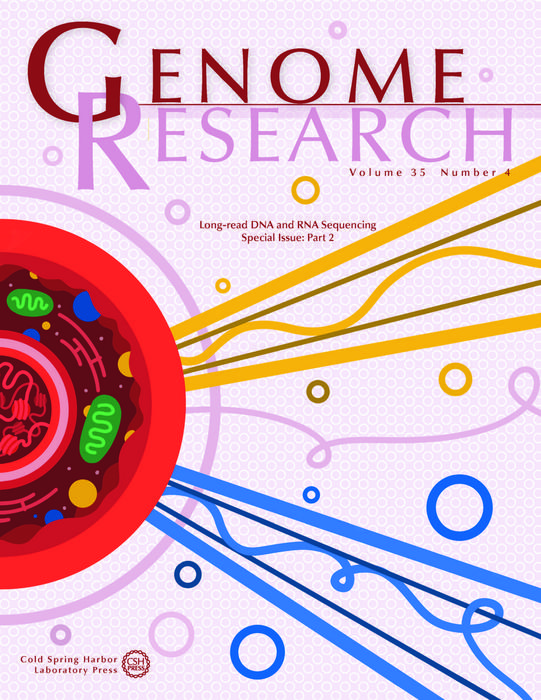
Genome Research is poised to make a significant impact in the unfolding landscape of genetic research with its upcoming Special Issue dedicated to Long-read DNA and RNA Sequencing Applications in Biology and Medicine. This second special issue promises to dive deep into the transformative power of long-read sequencing, a methodology that has already begun to reshape our understanding of biological and clinical phenomena. Scheduled for publication on April 14, 2025, this issue is edited by eminent scientists Dr. Ana Conesa, Dr. Alexander Hoischen, and Dr. Fritz Sedlazeck, each contributing their expertise to present a collection of research papers that showcase novel applications and advancements in the domain of long-read sequencing technology.
Long-read sequencing (LRS) technologies offer a paradigm shift in genomics by enabling researchers to analyze longer fragments of DNA and RNA than traditional sequencing methods. This ability not only allows for more comprehensive insight into the intricate architecture of genomes but also facilitates the exploration of features that were once elusive, such as structural variants, repetitive regions, and the vast array of potential transcript isoforms. The articles featured in this special issue underscore such advancements, with a focus on their biological and clinical implications.
Among the featured studies, groundbreaking work addressing human diseases emphasizes the innovative uses of LRS for diagnosing rare disorders and understanding complex diseases like cancer. Research focusing on rare neurological diseases and cancers showcases the critical role of LRS. One notable contribution from Chen et al. introduces the Nanopore Rolling Circle Amplification-enhanced Consensus Sequencing, or NanoRCS technique, which facilitates the detection of tumor fractions in cell-free DNA—demonstrating the high potential of integrating these advanced methodologies into clinical practice.
In addition to individual studies, other research efforts also explore the landscape of structural variant analysis through optical genome mapping, a powerful technique not reliant on sequencing that enhances the identification of large and complex genetic rearrangements. For instance, studies reveal significant strides in mapping genetic structural variants associated with neural tube defects and other congenital anomalies, illuminating the varying genetic underpinnings of these conditions and hinting at future diagnostic applications.
The advancements in long-read sequencing are not confined to human genomics; researchers are increasingly applying these techniques to a variety of species, thereby broadening the scope of biological insight. These inquiries span topics from population genetics to evolutionary biology, with exciting applications in animal husbandry and conservation genetics. For instance, work related to pangenomes, such as that conducted by Milia et al., explores structural variants that contribute to phenotypic traits in cattle, showcasing the integration of LRS in agricultural biotechnology and breeding programs.
The issue also features comprehensive reviews that contextualize the contributions of long-read technologies within wider scientific narratives. These articles delve into the challenges and opportunities presented by LRS for genome annotation, epigenetic profiling, and the nuanced understanding of complex traits. Their implications stretch beyond academia, signaling potential pathways towards more personalized medicine and enhanced health outcomes by enabling detailed genomic evaluations.
Moreover, the technical discussions encapsulated within this issue highlight the long-standing issues associated with traditional sequencing approaches—such as read length limitations and difficulties in resolving repetitive regions—which LRS adeptly navigates. Tool development and novel algorithms foster the utility of long-read data, marking a significant step forward in genomic analysis methods. For example, the introduction of MotifScope by Zhang et al. configures a sophisticated approach to characterization and visualization of tandem repeats, which are crucial for not only understanding genetic variability but also disease etiology.
As exciting as these developments are within academic circles, their eventual adoption in clinical practice could herald a new dawn in diagnostics and treatment planning for patients with complex genetic conditions. The eventual integration of long-read sequencing into standard practice necessitates consideration of ethical implications and healthcare policies that would facilitate its adoption, ensuring that these advancements reach the patients who stand to benefit the most.
In summary, the second Special Issue of Genome Research on Long-read DNA and RNA Sequencing Applications embodies cutting-edge advancements in technology while faithfully documenting their substantial contributions to our knowledge of biology and medicine. Collectively, the research showcased serves not only as a testament to scientific innovation but also as a clarion call for the integration of these technologies into the future framework of genomic medicine.
This special issue promises to be an invaluable resource for researchers, clinicians, and policymakers alike as the field continues to evolve rapidly. By leveraging the capabilities of long-read sequencing, medical research stands on the brink of unprecedented discovery, poised to redefine genetic disease diagnosis and treatment protocols significantly.
Subject of Research: Long-read DNA and RNA Sequencing Applications
Article Title: Special Issue on Long-read DNA and RNA Sequencing Applications in Biology and Medicine Part 2
News Publication Date: 14-Apr-2025
Web References: Genome Research
References: None
Image Credits: Illustration by Alex Cagan, University of Cambridge
Keywords: long-read sequencing, genomics, cancer diagnosis, rare diseases, genome mapping, structural variants, transcriptomics, pangenome, personalized medicine, bioinformatics.
Tags: applications of long-read sequencingcomprehensive genomics analysis techniquescontributions of eminent scientists in genomicsgenetic research methodologiesimplications of sequencing technologies in medicineinsights into biological phenomenalong-read DNA sequencing advancementsRNA sequencing innovationsstructural variants in genomicstranscript isoform explorationtransformative power of sequencing technologiesupcoming genome research publications





